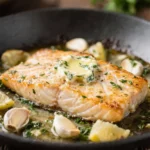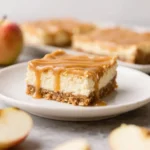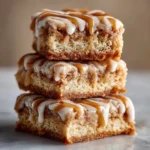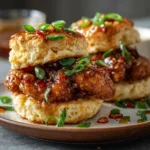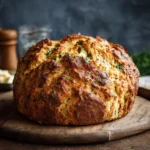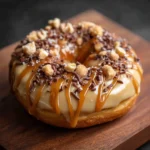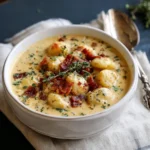Maple Donut: A Sweet Taste of Tradition and Comfort
The maple donut is more than just a pastry—it’s a celebration of North American culinary heritage, blending rustic charm with the rich, earthy sweetness of maple syrup. Whether enjoyed at a roadside farm stand in Vermont, a bustling farmers market in Ontario, or freshly made in your own kitchen, the maple donut offers a warm, indulgent experience that appeals to both traditionalists and modern food lovers alike. With its golden-brown crust, tender crumb, and unmistakable maple glaze, this beloved treat has evolved from humble beginnings into a gourmet favorite across the continent.
The History of the Maple Donut
The origins of the maple donut trace back to early North American settlers and Indigenous communities who first discovered and utilized maple sap as a natural sweetener. Long before refined sugar became widely available, Indigenous peoples of northeastern North America—particularly the Algonquin, Ojibwe, and Iroquois—developed sophisticated techniques for tapping maple trees and boiling the sap into syrup and sugar. When European settlers arrived, they adopted these practices and began incorporating maple products into their daily cooking, including baked goods.
Donuts themselves have roots in Dutch olykoeks (oil cakes), brought to America in the 17th century. Over time, American bakers adapted the recipe, eventually adding leavening agents and experimenting with flavors. In rural regions where maple syrup was abundant—especially in New England and eastern Canada—maple syrup naturally became a go-to sweetener for donuts. The combination proved irresistible: the deep, woody notes of real maple syrup complemented the fried dough perfectly, creating a uniquely regional delicacy.
In the 20th century, especially during the rise of roadside agriculture tourism, maple donuts gained popularity at sugar shacks, pancake houses, and autumn harvest festivals. Today, they are considered a seasonal staple—often associated with fall and spring maple sugaring seasons—but thanks to modern preservation methods, high-quality maple syrup is available year-round, allowing maple donuts to be enjoyed anytime.
Ingredients Breakdown: What Makes a Maple Donut Special?
The magic of a maple donut lies not only in its flavor but in the quality and balance of its ingredients. While variations exist, a classic maple donut typically consists of two main components: the donut itself and the maple glaze or icing. Each ingredient plays a vital role in texture, moisture, and taste.
- All-Purpose Flour: Provides structure and the classic soft-yet-chewy texture expected in yeast-raised or cake-style donuts.
- Granulated Sugar: Adds sweetness and aids in browning during frying. Some recipes reduce or omit it if relying solely on maple for sweetness.
- Butter (unsalted): Enhances richness and contributes to a tender crumb. Melted and cooled butter integrates smoothly into the batter.
- Eggs: Act as a binder and add moisture and structure. They also help create a golden color when fried.
- Milk: Softens the dough and activates yeast in yeast-raised versions. Warm milk is essential for proper fermentation.
- Yeast (for raised donuts) or Baking Powder (for cake donuts): Determines the texture. Yeast donuts are airy and slightly chewy; cake donuts are denser and more compact.
- Maple Syrup (preferably Grade A Dark Color/Robust Taste or Grade B): The star ingredient. Real maple syrup provides complex caramelized, woody, and slightly smoky flavors that imitation syrups cannot replicate. It should be used in both the dough and the glaze for maximum impact.
- Maple Extract (optional but recommended): Intensifies the maple flavor without thinning the batter or glaze. Use sparingly—it’s highly concentrated.
- Fat for Frying (vegetable oil, canola oil, or peanut oil): Must have a high smoke point to fry donuts evenly without burning. Oil temperature control is crucial for perfect results.
- Confectioners’ Sugar (for glaze): Forms the base of the maple icing, providing smoothness and sweetness.
- Salt: Balances sweetness and enhances overall flavor depth.
- Vanilla Extract: Complements the maple by adding warmth and rounding out the flavor profile.
For those seeking authenticity, using 100% pure maple syrup—not pancake syrup, which is typically corn syrup with artificial flavor—is non-negotiable. The difference in taste is profound and transformative.
Step-by-Step Recipe: How to Make Homemade Maple Donuts
Follow this detailed guide to create delicious, bakery-quality maple donuts right in your kitchen. This version uses a cake-style base for simplicity and speed, though a yeast-raised alternative is discussed later in variations.
Ingredients:
- 2 cups all-purpose flour
- 1/2 cup granulated sugar
- 2 teaspoons baking powder
- 1/4 teaspoon salt
- 1 large egg
- 1/2 cup whole milk
- 1/4 cup unsalted butter, melted and cooled
- 1/3 cup pure maple syrup (Grade A Robust or equivalent)
- 1 teaspoon vanilla extract
- 1/2 teaspoon maple extract (optional but recommended)
- Vegetable oil, for frying (about 4–6 cups, depending on pot size)
For the Maple Glaze:
- 1 1/2 cups confectioners’ sugar
- 1/4 cup pure maple syrup
- 2–3 tablespoons milk or cream
- 1/4 teaspoon maple extract (optional)
- Pinch of salt
Directions:
- Prepare the Dough: In a large mixing bowl, whisk together flour, sugar, baking powder, and salt. In a separate bowl, beat the egg, then whisk in milk, melted butter, maple syrup, vanilla, and maple extract until smooth.
- Combine Wet and Dry Ingredients: Gradually pour the wet mixture into the dry ingredients. Stir gently with a wooden spoon or spatula until just combined. Do not overmix—small lumps are okay. The batter should be thick but scoopable.
- Rest the Batter: Cover the bowl with a clean towel and let it rest for 15–20 minutes. This allows the flour to hydrate fully and improves texture.
- Heat the Oil: Pour oil into a heavy-bottomed pot or Dutch oven to a depth of about 2–3 inches. Heat over medium heat to 350°F (175°C). Use a candy thermometer for accuracy—maintaining the correct temperature is essential for even frying.
- Shape the Donuts: On a lightly floured surface, roll out the dough to about 1/2-inch thickness. Use a round donut cutter (3–4 inches in diameter) or two different-sized circular cutters to shape the donuts and holes. Gently place them on a parchment-lined tray. Re-roll scraps once for additional donuts.
- Fry the Donuts: Carefully slide 2–3 donuts at a time into the hot oil. Fry for 1–2 minutes per side, flipping once, until golden brown. Avoid overcrowding the pot. Remove with a slotted spoon or spider strainer and drain on a wire rack set over paper towels.
- Cool Slightly: Let donuts cool for 3–5 minutes. They should be warm but not hot when glazed.
- Make the Glaze: In a medium bowl, whisk together confectioners’ sugar, maple syrup, milk, maple extract (if using), and salt until smooth. Add more milk for a thinner glaze or more sugar for a thicker one.
- Glaze the Donuts: Dip the top of each warm donut into the glaze, swirling gently to coat. Allow excess to drip off, then place glazed-side up on a wire rack to set. For extra flair, drizzle with additional maple syrup or sprinkle with crushed pecans.
- Serve Immediately: Maple donuts are best enjoyed fresh and warm. However, they can be stored for short periods (see tips).
Tips for Perfect Maple Donuts Every Time
- Use Real Maple Syrup: Never substitute pancake syrup. The depth of flavor from genuine maple syrup makes all the difference.
- Control Oil Temperature: Too hot, and the donuts burn on the outside while staying raw inside. Too cool, and they absorb too much oil, becoming greasy. Maintain 350°F consistently.
- Fry in Batches: Keep cooked donuts warm in a 200°F oven on a wire rack while finishing the rest, but avoid stacking them to prevent sogginess.
- Don’t Overmix the Batter: Overworking develops gluten, leading to tough donuts. Mix until just combined.
- Glaze While Warm: Warm donuts absorb the glaze slightly, creating a delicate, melt-in-the-mouth texture. Cold donuts may cause the glaze to slide off.
- Wire Rack for Draining: Prevents steam buildup and keeps the bottom crisp.
- Enhance Flavor: Add a pinch of cinnamon, nutmeg, or even a dash of bourbon to the glaze for complexity.
- Freezing Unfried Dough: You can freeze shaped donuts on a tray, then transfer to a bag. Fry straight from frozen, adding 30 seconds per side.
Variations and Customizations
While the classic maple donut is timeless, creative adaptations allow you to tailor the treat to different tastes and dietary needs.
- Yeast-Raised Maple Donuts: Substitute baking powder with 2 1/4 teaspoons active dry yeast. Proof in warm milk with a bit of sugar, then incorporate into flour. Allow dough to rise until doubled (1–2 hours), roll, cut, and proof again for 30 minutes before frying. These are lighter and airier.
- Baked Maple Donuts: For a healthier twist, bake instead of fry. Use a donut pan, spray with non-stick oil, fill 3/4 full, and bake at 350°F for 10–12 minutes. Glaze as usual.
- Maple Bacon Donuts: Crumble cooked, crispy bacon and sprinkle over the glaze for a sweet-and-salty sensation. A popular brunch item!
- Maple Pecan Donuts: Fold chopped toasted pecans into the batter or press them onto the glazed surface.
- Maple Glazed with Sea Salt: Sprinkle a pinch of flaky sea salt on top of the glaze just after dipping. The contrast elevates the maple flavor.
- Vegan Maple Donuts: Replace egg with a flax egg (1 tbsp ground flax + 3 tbsp water), use plant-based milk, and vegan butter. Ensure maple syrup is certified vegan (most are).
- Gluten-Free Maple Donuts: Use a high-quality gluten-free flour blend with xanthan gum. Results vary, so follow tested GF donut recipes for best texture.
- Mini Maple Donut Holes: Skip cutting rings and fry small scoops of dough. Perfect for parties or snacking.
- Maple Cream-Filled Donuts: Inject with maple pastry cream made from custard, maple syrup, and a touch of butter.
- Seasonal Twists: Add pumpkin spice in the fall, orange zest in winter, or lavender in spring for aromatic variety.
Health Considerations and Nutritional Value
Maple donuts, like most fried pastries, are best enjoyed in moderation as an occasional treat. However, there are ways to make them slightly more balanced or mindful.
Nutritional Profile (per average maple-glazed cake donut, ~70g):
- Calories: ~300–380
- Total Fat: 15–20g (mostly from frying oil and butter)
- Saturated Fat: 4–7g
- Carbohydrates: 40–50g
- Sugars: 20–30g (a mix of added sugar and natural sugars from maple syrup)
- Protein: 3–5g
- Sodium: 150–250mg
Benefits of Real Maple Syrup: Unlike refined sugar, pure maple syrup contains trace minerals such as manganese, zinc, calcium, and potassium. It also has antioxidants and a lower glycemic index than table sugar, meaning it causes a slower rise in blood sugar. However, it is still high in natural sugars and should be consumed mindfully.
Healthier Alternatives:
- Baking instead of frying reduces fat content significantly.
- Using less glaze or opting for a light dusting of cinnamon-sugar instead.
- Serving with Greek yogurt or fruit to balance the meal.
- Portion control: making mini donuts helps manage intake.
Those with diabetes, heart conditions, or calorie restrictions should enjoy maple donuts occasionally and consider homemade versions where sugar and fat can be better controlled.
Frequently Asked Questions (FAQ)
Q: Can I use imitation maple syrup?
A: Not recommended. Imitation syrups lack the depth and natural compounds of real maple syrup and often contain artificial flavors and high fructose corn syrup. The taste and quality will suffer significantly.
Q: Why did my donuts come out greasy?
A: Likely due to oil that was too cool during frying. Maintain a steady 350°F. Also, ensure donuts are drained properly on a wire rack, not paper towels alone.
Q: Can I make maple donuts ahead of time?
A: Yes, but they’re best fresh. You can fry unglazed donuts and reheat them at 300°F for 5 minutes before glazing. Or freeze fried donuts for up to 2 months; thaw and re-crisp before serving.
Q: How long do maple donuts last?
A: At room temperature, 1–2 days in an airtight container. Refrigeration extends life but may make them dense. Reheating in a toaster oven restores crispness.
Q: Can I air-fry maple donuts?
A: Air fryers work well for baked donuts but not traditional fried ones. You can achieve a similar texture with donut-shaped cakes air-fried at 350°F for 8–10 minutes, then glazed.
Q: Is there alcohol in maple syrup?
A: No, pure maple syrup is non-alcoholic. However, some flavored syrups or extracts may contain alcohol, so check labels if needed.
Q: Can I use maple sugar instead of syrup?
A: Yes, but dissolve it properly. Maple sugar can replace granulated sugar in the dough, but for the glaze, you’ll need liquid syrup for consistency.
Summary
The maple donut is a cherished symbol of North American tradition, combining the rustic sweetness of pure maple syrup with the comforting indulgence of fresh-fried dough. Whether made at home or savored at a country fair, it remains a timeless treat that celebrates flavor, seasonality, and craftsmanship in every bite.

